26 November, 1925, its first flight was made by TB-1 (ANT-4)
In the TB-1 aircraft (the ANT-4 prototype), it was possible for the first time in the world to combine all the signs of a monoplane bomber with the highest possible completeness. In those years aviation experts admired the completeness of the design and the beautiful forms of the Soviet aircraft. TB-1 became the prototype for many bombers, built on a freestanding monoplane scheme. Many foreign designers did not hesitate to copy his scheme, while for a long time TB-1 remained the best machine in the world in its class.
The design of the TB-1 (ANT-4) aircraft with the Nepir-Lyon (450 hp) engines began in TsAGI 11 on November 1924 of the year by order of the Special Technical Bureau. The construction of the aircraft began in Moscow in an unsuitable room for this purpose, located on the second floor of the house No. XXUMX on Radio Street and was delayed by a shortage of skilled workers. Despite this, already 16 August 11, the assembly of the aircraft was completed. In order to send the plane to the airfield I had to break the wall of the house. The final assembly at the airport was completed by October of the same year. The first flight, which lasted only 1925 minutes, test pilot A. I. Tomashevsky made 7 November 26 of the year. After some fine-tuning of the aircraft design, the second flight took place on 1925 February 15 of the year and lasted 1926 minutes.
After carrying out a number of regular modifications, the ANT-4 was put up for state tests. Their first part lasted from June 11 to July 2 1926 of the year, in total, the plane flew 42 hours. Launching of engines and control systems provided the aircraft with a maximum speed of 196,5 km / h. In this case, the pilots noted the ease of take-off and landing, good handling of the machine. The plane showed excellent stability in flight, the pilot could briefly drop control even when making a U-turn. At a height of 400-500 meters, the car could easily fly on one engine without a decline. Tomashevsky managed to make two record flights on ANT-4 over the duration of the established programs for the duration with a load of 1075 kg and 2054 kg. In the first case, the aircraft was in the sky 4 hours 15 minutes, in the second - 12 hours 4 minutes. Since at that time the Soviet Union was not part of the International Aviation Federation, these records were not recognized abroad.
State tests of the aircraft lasted intermittently until 26 March 1929, after which the aircraft was recommended for mass production. The Soviet Air Forces ordered several hundred TB-1 bombers, which made it possible to proceed to the formation of heavy bomber formations. Prior to that, only two types of such aircraft were in service in the USSR: French FG-62 (Farman F.62 "Goliath") and German SOUTH-1 (Junkers K.30). However, both of them were insufficient. So "Goliaths" there were only 4 pieces, and "Junkers" - about two dozen. By the time the first bombers of the TB-1 began to arrive, the Soviet air forces had two squadrons armed with the south-1, and the FG-62 aircraft were used as training and transport vehicles. After the start of deliveries, the TB-1 had the opportunity to reflect on the creation of heavy bomber teams. Each brigade was to include three squadrons of 6 aircraft. Thus, together with the headquarters airplanes, a fully equipped brigade of heavy bomber was to include 20 aircraft.
At the first TB-1 bombers, a communication system designed for three subscribers and consisting of microphones and two-ear phones was to appear. However, to adjust its work and failed. Because of the noise of the motors and noise, it was simply impossible to hear anything in the headphones. For this reason, it was decided to switch to color alarm. A set of three light bulbs that light up in various sequences and combinations, transmitted a set of code messages.
The aircraft immediately liked the pilots. The car was stable in all flight modes and despite significant dimensions could make deep turns. However, in this case there could be observed insignificant vibrations of the ends of the wing, which were harmless. The take-off of the aircraft was as simple as its landing. When moving from P-1 to TB-1, the Soviet pilots had only to get used to the new steering column. Also, TB-1 was quite successfully exploited from uneven sites.
Significant disadvantages of the aircraft include a limited review of the pilots on the taxiing and at the beginning of take-off. The long nose of the aircraft closed the view ahead. In this case, the left pilot saw only that on the left, and the right - on the right. For this reason, on the aerodrome, the aircraft was taxed by the commands of the navigator, who was standing in the front turret opening. The landing of the aircraft for the same reasons was carried out depending on where the pilot was: the right pilot made a right turn, the left, respectively, left. Also, the cockpit was cramped for flying in winter, when the crew donned a winter uniform, which included a fur coat, felt boots and mittens. And in general, in the open bomber cabins in the winter was quite uncomfortable. In freezing weather, the pilots greased their skin with goose fat, and put a woolen mask on their faces.
The summer of 1 was a kind of “high point” for the TB-1932 bombers. By August 25 of this year the Soviet Air Force had an 203 of this type of aircraft. More than a third of these vehicles were deployed in the Moscow Military District. However, in the autumn, heavy bomber brigades began to be re-equipped with new four-engine TB-3. By the spring of 1933, the entire Air Force had only 4 squadrons left, which were equipped with old equipment. At the May Day parade in Moscow, the number of TB-3 bombers already doubled the number of TB-1. Gradually, twin-engine bombers were crowded into the role of transport and training aircraft. At the same time, pilots who did not undergo training were not allowed to fly on TB-3.
In the record of TB-1 (ANT-4) there are many interesting things. In particular, this aircraft took part in the famous epic of saving Chelyuskinites. 5 March 1934, the plane, which was controlled by A. V. Lyapidevsky, brought the first group of members of the expedition stuck in the ice onto the mainland from the ice camp. And before that, in the year 1929, for the first time in the world, an experiment was carried out on the TB-1 aircraft to uncouple two fighter planes in flight from the “uterus plane”. The experimental project proposed by the engineer V.S. Vakhmistrovym was called “Airplane-link”. At the same time, the outstanding Soviet pilot V.P. Chkalov carried out the main tests in flight of the “flight-plane” in 1929.
For its time, the TB-1 (ANT-4) aircraft had excellent flight data. With Soviet-made M-17 engines that developed power to the 680 horsepower, the aircraft could accelerate to 207 km / h. The excellent performance and flight characteristics of the ANT-4 aircraft were demonstrated by the crew of S. A. Shestakov, who, on the serial model of the machine, called the “Country of Soviets”, flew 137 flight hours (from 23 August to 30 in October 1929) of the year Moscow - Omsk - Khabarovsk - Petropavlovsk-Kamchatsky - Attu Island - Seattle - San Francisco - New York. The total length of the route, which was not without incident, was 21 242 kilometers. A significant part of the way, almost 8 thousands of kilometers, the crew traveled over the surface of the water. The change of the aircraft's landing gear to the float was made in Khabarovsk.
To this day, at least two aircraft TB-1 in the civilian version have survived. In 1980-ies on the island of Dixon was found G-1, which crashed in 1940-ies (there was a destruction of the landing gear). A group of cadets from the Vyborg Aviation Technical School left for the island in August 1985. They reached the scene of the accident by helicopter, after which they began to disassemble the aircraft. As a result, it was disassembled it was delivered by IL-76 to Vyborg, where it was completely restored. As a result, this aircraft became an exhibit of the museum of civil aviation in Ulyanovsk, here you can see it today. Another already float-operated Г-1 is located near the station in the village of Taksimo (Muysky district of the Republic of Buryatia). This aircraft is mounted on a stele and has a tail number of the USSR ZH-11.
Description of the aircraft TB-1
The TB-1 bomber is a twin-engine, free-carrying all-metal monoplane. Its design was truss, with dural corrugated skin. The corrugation pitch on the fuselage and wing of the aircraft was 32 mm. The main material was duralumin (kolchugalyuminiyu) using steel in the most loaded nodes of the structure. In cross section, the bomber's fuselage was trapezoidal, with a narrowing to the bottom. The fuselage consisted of three compartments: the nose - F-1, central (combined with the center section) - F-2 and tail - F-3. The fuselage frame included a 21 frame, 9 of which were reinforced.
The airframe TB-1 was divided into separate units, which greatly facilitated the production process, repair and transportation. The wing of the aircraft consisted of a center section and consoles, while the center section had a detachable toe and rear. Steel welded mounts, designed for the installation of two engines, were attached to the center section. As part of the center section was 5 spars. Spars - truss, riveted of pipes with variable cross-section.
The plumage of the TB-1 bomber was free-carrying, with all steering surfaces equipped with horn compensation. Aircraft Stabilizer - adjustable in flight. The angle of the stabilizer could be changed with the help of the steering wheel located to the right of the left pilot. Spars of rudders and ailerons - pipes; stabilizer - with shelves of pipes and sheet walls.
The power plant was originally represented by two piston engines BMW VI, however, after Rybinsk mastered and started mass production of its domestic modification M-17, it was possible to refuse to import. Both engines were V-shaped, 12-cylinder, water cooled. They used water radiators of cellular type. In the operation of the aircraft, the installation on one bomber of one M-17 engine and one BMW VI, which had one compression ratio, was completely permitted. The engines were started by auto-starter or compressed air, and, if necessary, manually, by simply rocking the screw. Each of the engines had an oil tank, the capacity of which was 56 liters. They were installed in a nacelle and separated by a fire wall. The aircraft was equipped with ten petrol tanks, the total fuel supply in them was 2010 liters. All tanks were combined into a single system. Tanks were suspended in the wing of the aircraft on special metal tapes with felt pads.
Pyramid-type aircraft landing gear with rubber cord damping. The wheels of the bomber were spoke, originally used the Palmar company wheels with the size of 1250x250 mm, but then they managed to switch to the Soviet analogue with the sizes 1350х300 mm. In the rear part of the TB-1 bomber's fuselage, a metal crutch was installed, equipped with rubber cushioning. In winter, the wheels could be easily replaced with skis. At the same time the trestle of the ski was worn on the half-shaft. Back and front of each ski attached rubber restrictive cables and cords-delay. In addition, instead of a wheeled chassis on the plane could be installed and float. The crutch on the float plane was filmed. The float versions of the TB-1 were additionally equipped with floating and bottom anchors, a hook and mooring facilities. On land, the TB-1P (float) rolled out on two special wheeled carts that joined the floats.
The following equipment was installed on the aircraft. In the navigator's front cockpit, there was an AN-2 compass, an altimeter, a speed indicator, a clock, a thermometer to determine the outdoor temperature. In the cockpit were altimeter, compass AL-1, two tachometers, direction indicators, speeds and glides, a clock, two thermometers for oil and water, two petrol and oil manometers. An AN-2 compass, speed indicator, altimeter, clock, etc. were installed in the rear cockpit. The radio equipment installed on the bomber consisted of an 13PS station, designed to receive radio beacons, and a shortwave receiving-transmitting telegraph and telephone station of the 11SK type, which was used for communication with aerodrome radio stations at long distances. Also on the plane were installed navigation and code lights, two landing lights, there was night lighting in the cockpit.
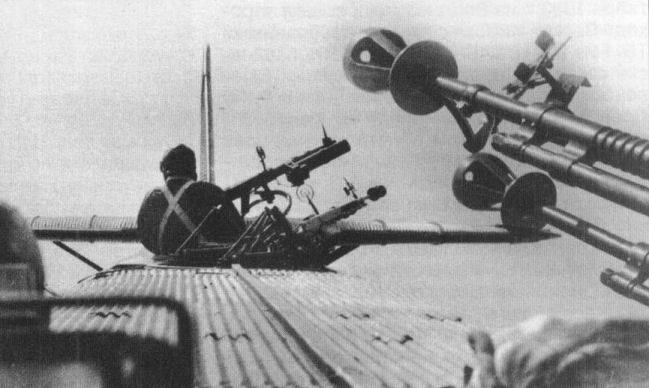
The small arms of the TB-1 bomber included three twin installations of 7,62-mm machine guns. Originally, Lewis machine guns of the 1924 model were used for years, which were then replaced with domestic YA machine guns. Machine guns were mounted on the Turre-6 turrets (bow) and Tur-5 (fodder), while the Tur-5 rolled from side to side. The internal suspension of the bombs was carried out using cassette holders Der-9, outer - Der-13. The total weight of the maximum bomb load reached 1300 kg. In this case, the following bomber loading options were possible: 16 32, 48 and 82 kg bombs, or up to four 250 kg bombs, located on the outer suspension.
The crew of the TB-1 bomber included a 6 man: the first pilot, the second pilot, the navigator-bombardier and three arrows. The flight mechanic could perform the functions of one of the shooters.
Flight performance TB-1:
Overall dimensions: length - 18 m, height - 5,1 m, wing span - 28,7 m, wing area - 120 m2.
Empty weight - 4520 kg.
Normal take-off mass - 6810 kg.
Maximum take-off weight - 7750 kg.
The power plant - 2 PD M-17, power up to 680 HP each.
The maximum flight speed is 207 km / h.
Cruising flight speed - 178 km / h.
Practical range - 1000 km.
Practical ceiling - 4830 m.
Armament - 6X7,62-mm machine guns YES and up to 1000 kg bomb load.
Crew - 6 man.
Information sources:
http://www.airwar.ru/enc/bww1/tb1.html
http://www.sovplane.ru/readarticle.php?article_id=21
http://www.monino.ru/index.sema?a=aviation&sa=item&id=71
http://www.opoccuu.com/261111.htm
http://www.calend.ru/event/5096
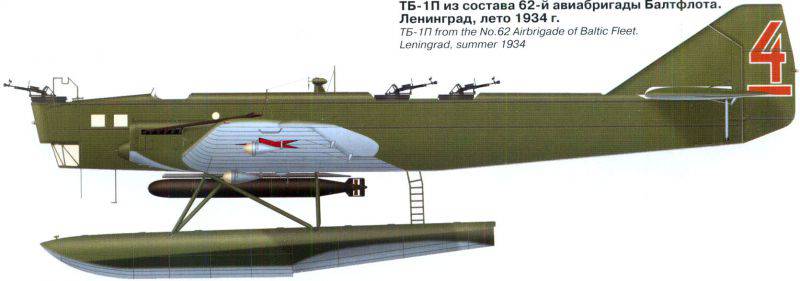
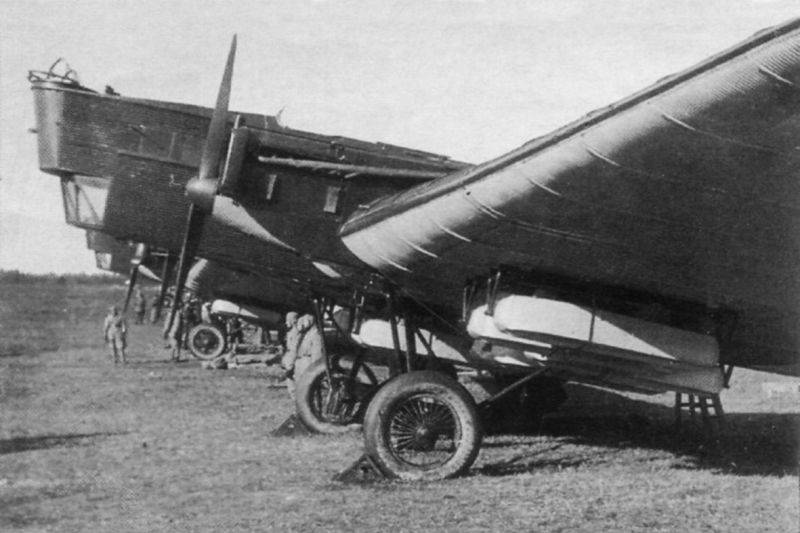
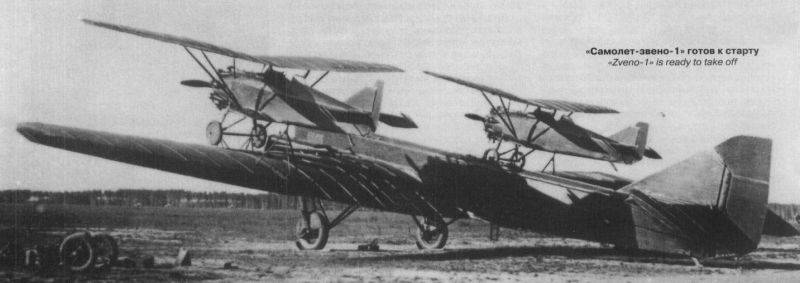
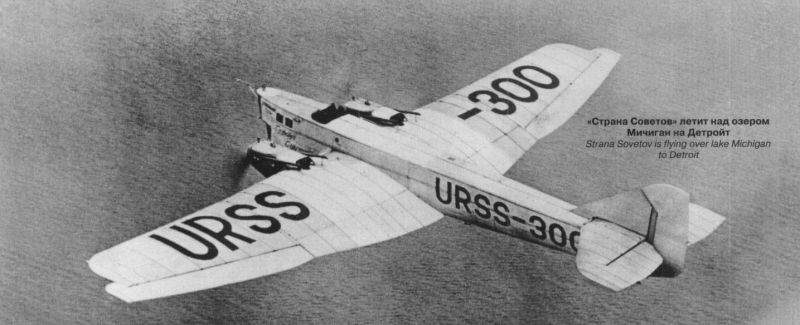
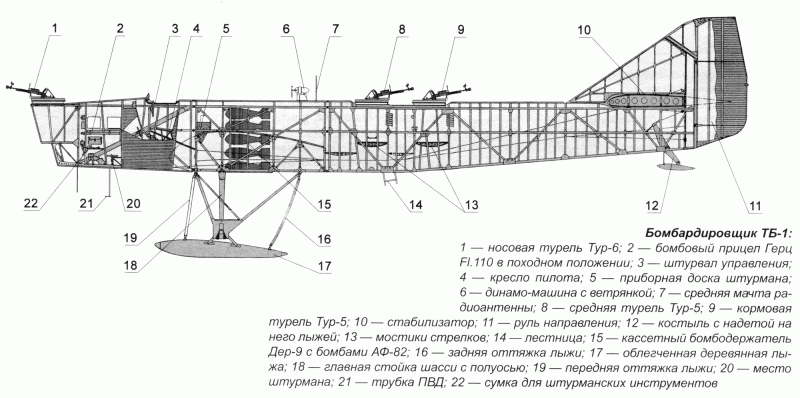
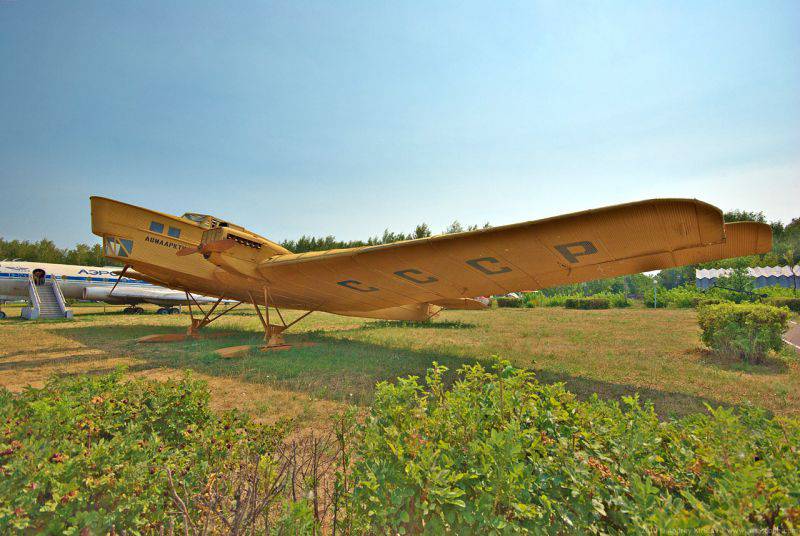
Information